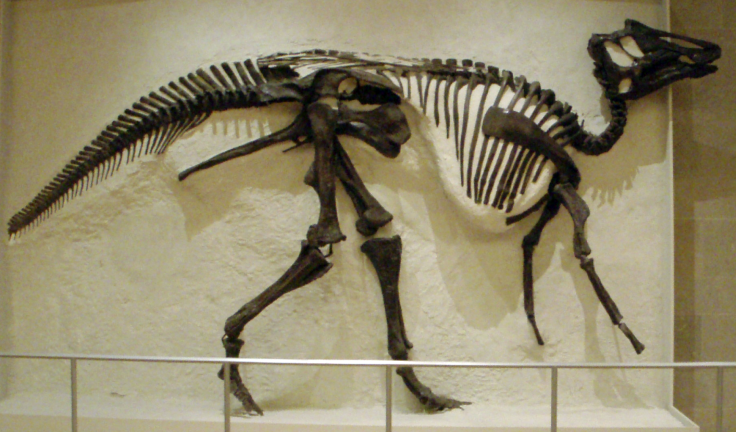
Archeologists have discovered a fully intact fossilized dinosaur tail near the small town of General Cepeda, Mexico. The tail is 15-feet long and is in untypically good condition. Scientists say the tail is roughly 72-million years old.
RELATED: T-Rex Tooth Found In Dinosaur Tailbone Proves The Species Was A Hunter, Not A Scavenger
The tail is thought to belong to a hadrosaur or duckbill dinosaur. The National Institute of Anthropology and History told the Daily News it is not yet possible to determine the species. This is however, the first full tail of its kind discovered in Mexico. The excavation took place in a town close to the border of Texas. Paleontologists worked for 20-days in order to remove the tail from the earth.
RELATED: National Museum Of Natural History D.C Welcomes Rare T-Rex Skeleton On Long Term Loan [VIDEO]
It is believed that the well preserved tail made up half the length of the dinosaur when it was alive nearly one-hundred million years ago. There are 50-vertebre that make up the large tail. Scientists found other fossils alongside the tail, including one of the animal's hips.
RELATED: T-Rex Returned: Smuggled Tyrannosaurus Bataar Skeleton Repatriated To Mongolia; 'Commercial Paleontologist' Eric Prokopi Arrested [VIDEO]
The Guardian says that this find could help scientists not only understand more about the creature it belonged to but also teach us more about the bone diseases dinosaurs suffered from. It is known to scientists that dinosaurs suffered from tumors, and arthritis. Scientists also say the bones of a dinosaur are similar to that of a human. Understanding what diseases they suffered from may help humans in the long run.
Dinosaur fossils are not a rare find in Mexico. The area where the tail was found is known for being its fossilized bones. Northern Mexican states are also known for their dig sites. The remains of the tail are currently being cleaned and examined by scientists from NIAH.
© 2025 Latin Times. All rights reserved. Do not reproduce without permission.




